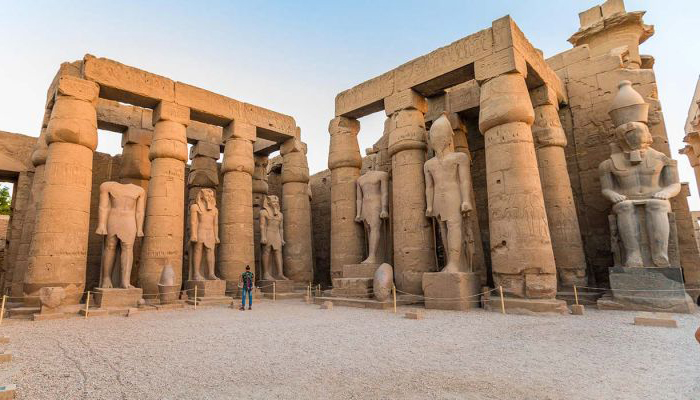
Luxor Temple
Situated in the heart of modern-day Luxor on the east bank of the Nile River, is a majestic ancient Egyptian temple complex dedicated primarily to the god Amun. It was constructed over hundreds of years by various pharaohs, including Amenhotep III, Tutankhamun, Ramses II, and others.
This temple served as a center for religious and ceremonial activities, connected to the larger complex of Karnak Temple via the famous Avenue of Sphinxes, an impressive corridor lined with sphinx statues.
The main entrance is marked by a massive pylon, leading into a courtyard flanked by colossal statues of Ramses II. The temple’s architecture showcases intricate carvings, hieroglyphs, and reliefs depicting various pharaohs’ military victories, religious rituals, and offerings to the gods.
The temple’s grandeur extends to its Hypostyle Hall, an impressive chamber with colossal columns adorned with hieroglyphs and detailed carvings, creating an awe-inspiring atmosphere for worshippers and visitors alike.
Throughout its history, Luxor Temple underwent modifications, additions, and expansions by different rulers, leaving behind layers of history and cultural significance. It served not only as a religious center but also as a focal point for royal ceremonies and celebrations.
The temple’s unique aspects include the presence of a Christian church, demonstrating its adaptive history and use through different periods.
Luxor Temple stands as a testament to ancient Egyptian architectural brilliance, religious devotion, and cultural significance, attracting tourists and historians from around the world who come to admire its grand structures, intricate artwork, and glimpse into Egypt’s rich past.